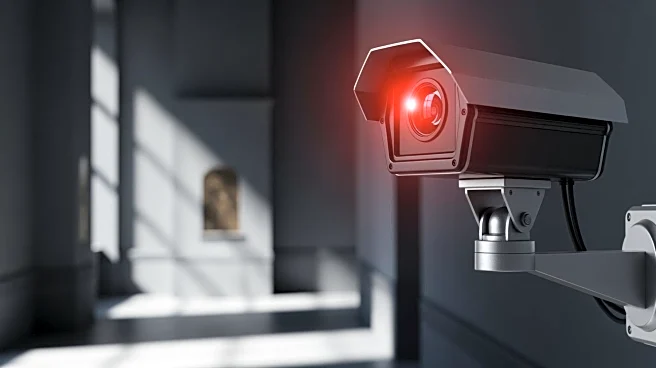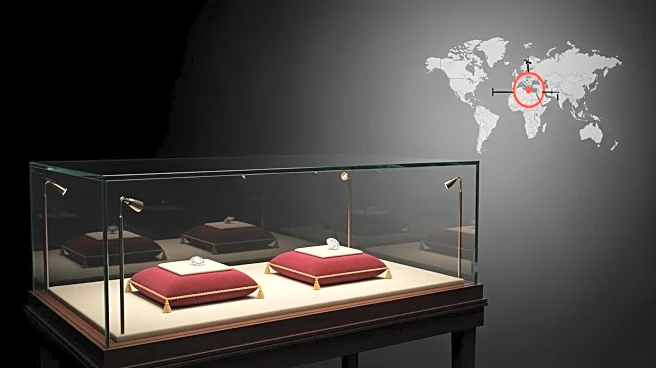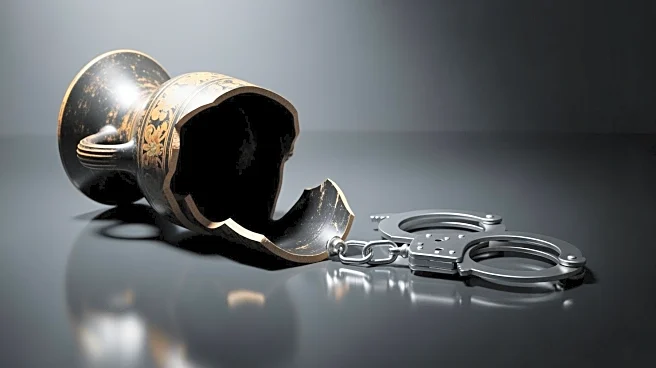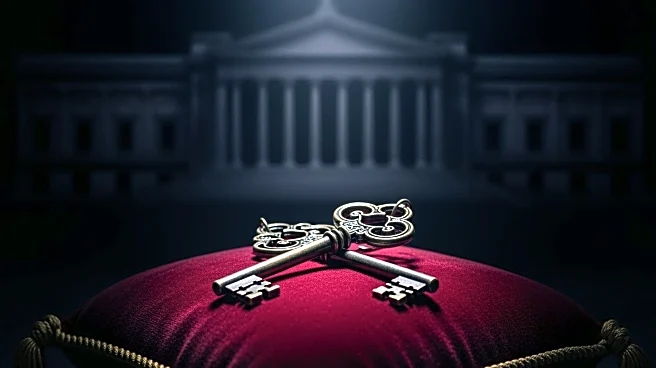What's Happening?
French authorities have successfully apprehended several suspects involved in a daring daytime heist at the Louvre Museum. The incident, which occurred last Sunday, involved four individuals who managed
to steal eight pieces of valuable jewelry, including royal necklaces and tiaras, in just seven minutes. The heist has sparked significant embarrassment for the French government and raised questions about the museum's security measures. The Paris prosecutor's office confirmed the arrests, noting that one suspect was attempting to flee the country. Investigators have collected over 150 DNA and fingerprint samples, which played a crucial role in identifying the suspects. The stolen items, valued at approximately 88 million euros, have not yet been recovered.
Why It's Important?
The Louvre heist has significant implications for both French national security and the global art community. The theft of such high-value items from a world-renowned institution highlights potential vulnerabilities in museum security systems, prompting calls for enhanced protective measures. The incident has also drawn attention to the issue of organized crime targeting cultural heritage, which could lead to increased international cooperation in art crime investigations. For the French government, the heist represents a reputational challenge, as it underscores the need for improved security protocols in high-profile public spaces. The recovery of the stolen items remains a priority, as their loss would be a significant cultural and financial blow.
What's Next?
Following the arrests, French authorities are expected to intensify their efforts to recover the stolen jewelry and apprehend any remaining suspects. The investigation will likely focus on tracing the stolen items, which may have been moved abroad. The Louvre Museum is anticipated to review and possibly upgrade its security measures to prevent future incidents. Additionally, there may be discussions about the role of law enforcement in safeguarding cultural institutions, with potential policy changes to enhance collaboration between museums and security agencies.
Beyond the Headlines
The Louvre heist raises broader questions about the protection of cultural heritage in an increasingly globalized world. As art theft becomes more sophisticated, museums and cultural institutions may need to adopt advanced technologies and strategies to safeguard their collections. The incident also highlights the ethical and legal challenges of recovering stolen art, particularly when items are trafficked across international borders. This case could serve as a catalyst for renewed dialogue on international art crime legislation and the responsibilities of countries in protecting cultural assets.











